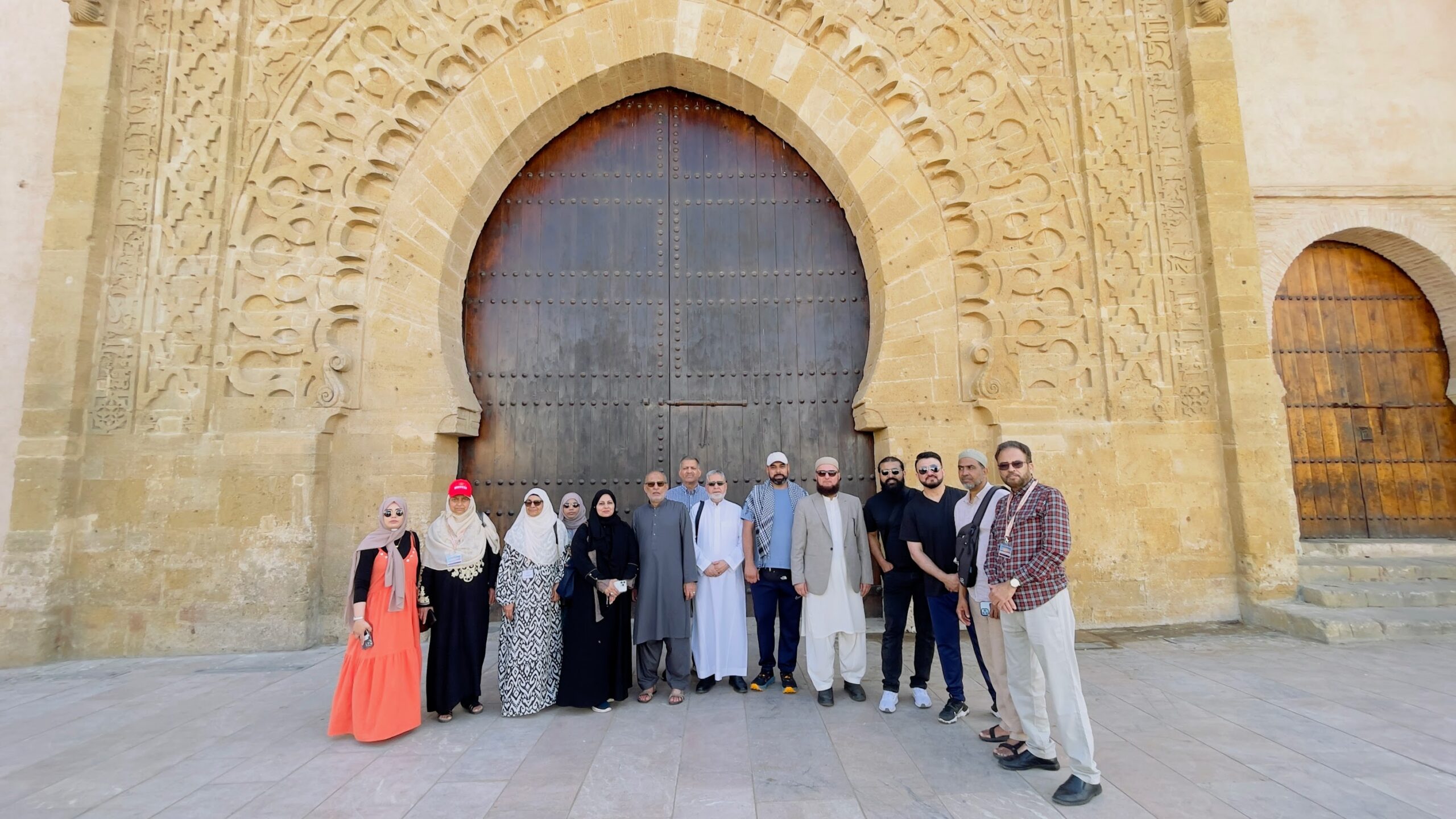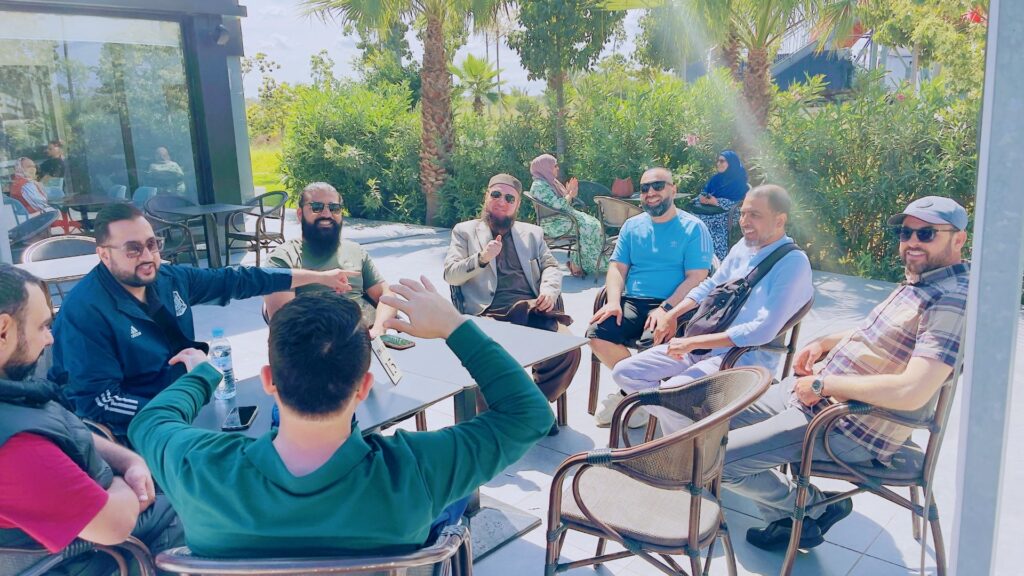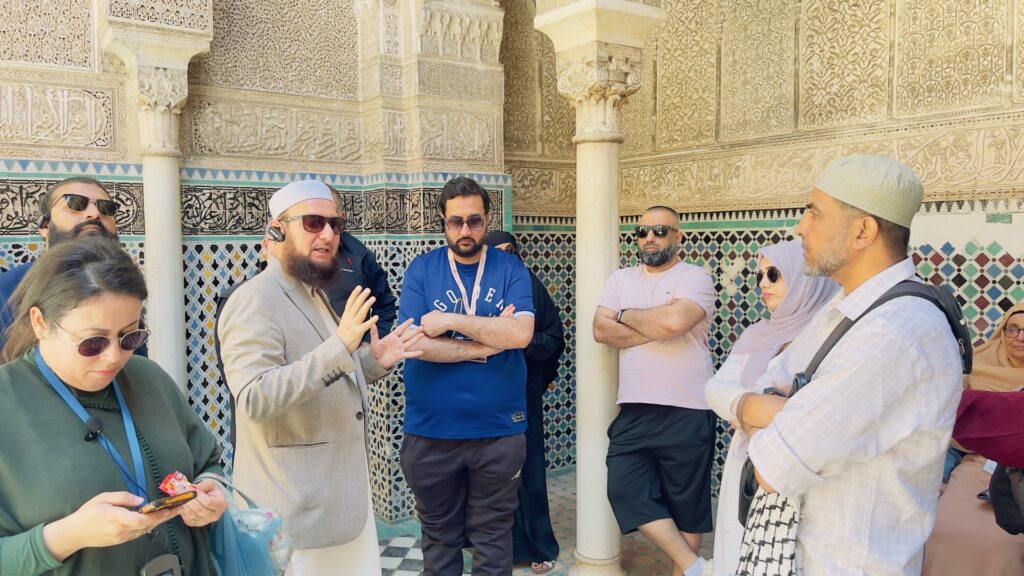
alwahabtours
12:09:21 September 18, 2025
Morocco is a land where history, culture, and Islamic heritage come alive in every corner. From the alluring blue streets of Chefchaouen to the exciting livelihood of Rabat, travellers are immersed in centuries of tradition, artistry, and spirituality. For those wondering why visit Morocco, its old mosques, medinas, and souks are reminders of a glorious historic past whilst also offering the warmth of Moroccan hospitality today.
Under the guidance of Mufti Abdul Wahab, a travel enthusiast with deep knowledge of Islamic history, Al-Wahab Tours ensures that your journey through Morocco is not just sightseeing, but a deeply enriching experience. Find out the best travel guide to Morocco and make it a journey of a lifetime by travelling with Al-Wahab Tours!


Tangier holds a unique place in Morocco’s history as the meeting point of Africa and Europe, the Atlantic and the Mediterranean. For centuries, it was a hub for trade, diplomacy, and culture, shaped by Phoenicians, Romans, Islamic dynasties, and Andalusian influence. As per the best travel guide to Morocco, visitors today can explore its historic medina, old mosques, bustling souks, and the famous Kasbah, all set against the backdrop of the Strait of Gibraltar. Tangier’s mix of cultures and its strategic role as a gateway city make it an essential stop for anyone wanting to understand Morocco’s past and present.
Located in the Rif Mountains, Chefchaouen is known worldwide for its beautiful, blue-painted streets and tranquil atmosphere. Founded in the 15th century as a refuge from the Spanish Reconquista, the city carries a deep spiritual heritage, reflected in its old mosques, zawiyas, and peaceful way of life. Visitors can wander through the medina’s narrow lanes, shop for local textiles, or simply take in the unique glow of a city where history and culture come together. Chefchaouen’s calm and charm make it one of Morocco’s most unforgettable destinations.
Fes is Morocco’s spiritual and intellectual capital, home to the world’s oldest university, Al-Qarawiyyin, founded in the 9th century. Its vast medina, a UNESCO World Heritage site, is filled with historic mosques, madrasas, and bustling souks that reflect centuries of Islamic heritage in Morocco. Walking through Fes offers a glimpse into Morocco’s religious devotion, traditional crafts, and role as a centre of faith and learning. For those who are keen to explore spiritual aspects of Fes, Al-Wahab Tours offers them with the best travel guide to Morocco to make it an unforgettable experience.
Meknes, one of the imperial cities highlighted in the best travel guide to Morocco, is known for its grand architecture and strong spiritual heritage. Built during the reign of Sultan Moulay Ismail in the 17th century, the city is surrounded by impressive walls and monumental gates that reflect its past power. At its heart lies the mausoleum of Moulay Ismail, a revered spiritual site that draws visitors seeking both history and reflection. With its blend of mosques, madrasas, and traditional markets, Meknes offers a unique balance of imperial grandeur and religious significance.
As Morocco’s capital, Rabat combines modern life with a deep Islamic and historical legacy. The city is home to landmarks such as the Hassan Tower, an unfinished 12th-century minaret, and the Mausoleum of King Mohammed V, a masterpiece of traditional Moroccan craftsmanship. Within the medina, centuries-old mosques and bustling souks sit alongside government buildings and wide boulevards, showing how Rabat bridges Morocco’s past and present. Its balance of heritage and vitality makes it an essential stop on any journey through the country according to the best travel guide to Morocco.
Casablanca is Morocco’s largest city and economic hub, known for its modern skyline, vibrant streets, and rich cultural blend. At its heart stands the Hassan II Mosque, one of the largest mosques in the world, with its stunning oceanfront location and intricate craftsmanship showcasing Morocco’s Islamic heritage. Beyond the landmark sites as per the best travel guide to Morocco, Casablanca offers lively markets, colonial-era architecture, and a glimpse into contemporary Moroccan life, making it a city where tradition and progress come together.
According to the best travel guide to Morocco, the best time to visit Morocco is during spring (March to May) and autumn (September to November), when the weather is mild and comfortable for exploring cities, mountains, and deserts. Considering the Morocco seasons for travel, Summers can be very hot, especially in areas like Fes, while winters are cooler, with snow in the Atlas Mountains and pleasant temperatures along the coast.
The ideal length of a trip according to the best travel guide to Morocco, depends on how much you want to see. For a first-time visitor with Al-Wahab Tours, 7-9 days perfectly allows you to explore key cities like Fes, Tangier, Casablanca, Rabat, and Meknes, while also enjoying the Blue Pearl of Chefchaouen or a short desert excursion.
For first-time visitors looking for the best travel guide to Morocco, the visit can be full of surprises. Dress modestly, especially in religious sites, and be ready to navigate bustling medinas and souks. Carry small change for tipping or purchases, try local cuisine like tagine and couscous, and take time to slow down, walking through narrow streets and markets is part of the experience. Learning a few basic Arabic or French phrases helps and always respect local customs and traditions. Planning ahead for transport, climate, and cultural highlights will make your trip smoother and more rewarding. Don’t forget to check Morocco seasons for travel so that you can pack up essentials in your luggage accordingly.
Al-Wahab Tours offers the best travel guide to Morocco, consisting of more than just sightseeing, it delivers authentic Moroccan experiences guided by passion and knowledge. Our Morocco Islamic Tours, with a focus on culture, history, and Islamic heritage, are designed to show both iconic landmarks and hidden gems, ensuring every trip is memorable and meaningful.
Our itineraries are based on the best travel guide to Morocco, crafted to balance Morocco’s rich history, spiritual heritage, and vibrant local life. Each route includes a mix of cities, mountains, deserts, and coastal areas, allowing travellers to experience Morocco fully without feeling rushed. Every stop is chosen to showcase the best of culture, food, architecture, and natural beauty.
Travel with guides who know Morocco like the back of their hand. Our team, led by Mufti Abdul Wahab, combines deep historical and cultural knowledge with personal experience, giving travellers insights into Islamic heritage, local customs, hidden spots and the reasons to why visit Morocco that most tourists never see.
With Al-Wahab Tours, all logistics are taken care of, from transport and accommodation to entry fees and local assistance. Our team is always at your service to ensure your journey is smooth and enjoyable.
Fes, Casablanca, Rabat, Meknes, Tangier, and Chefchaouen, plus the Atlas Mountains, Sahara Desert, historic mosques, medinas, and local markets.
Yes. Meals are halal, visits to religious sites are respectful, and activities follow Islamic and cultural guidelines.
Most tours last 7–14 days, with options for short city-focused trips or longer journeys including mountains and desert excursions.
No. Our guides, led by Mufti Abdul Wahab, explain Islamic heritage in Morocco clearly, making it accessible for everyone.
We combine culture, history, and spiritual insight. Guided by Mufti Abdul Wahab, our Morocco Islamic tours show both famous sites and hidden gems, offering meaningful experiences beyond regular sightseeing.